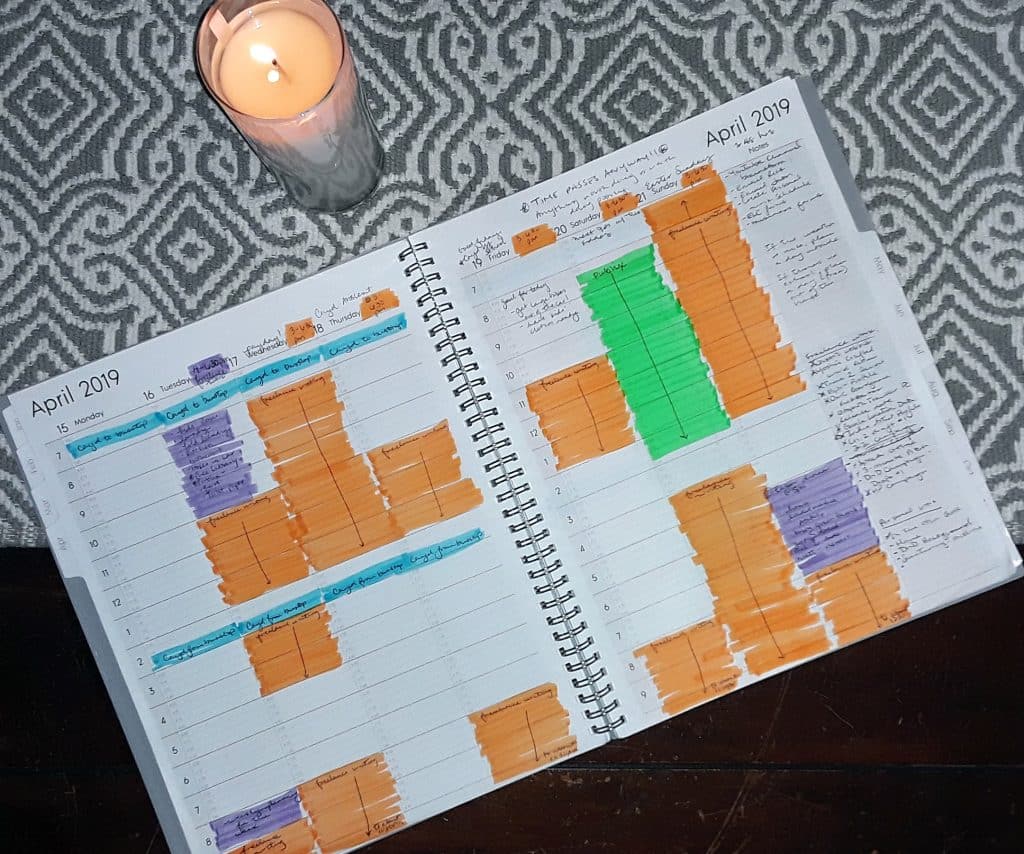It has begun to feel increasingly like the hours a day we’ve been given has slowly been siphoned away to be like 15, rather than 24. All projects are put on the backburner for everything and everyone else, but it doesn’t have to be like that. You can increase your productivity and learn to fit more in your day by using a method known as time blocking.
Time blocking is meant to be a way to organize your time into small, manageable chunks to get things done efficiently. The idea here is to find time to tuck things into your week. If I need at least 10 hours a week to get a project done by the end of the month, I need to find time to stick 15 minutes here and 30 minutes there, on days where a full writing day is non-existent. Every little bit counts and by negating the usefulness of that time is what helps make use feel less productive and even guilty for not getting these things done. We want to, but we complain that we can’t find the time
Track your entire week
This method is popular in writing communities and can be transitioned over to nearly any other market or project. Track everything you do for an entire week — and I mean everything. That 15-minute rabbit hole into your Facebook feed most certainly counts. At the end of the week, see what you have. Mark “Important” things that you can’t get out of, like work or chores around the house. Denote also “Personal” items, like the gym or lunch dates with friends. Finally, mark everything that is a waste of space. Yes, Facebook goes here. Where you can eliminate items and have some empty space marks where you can start integrating what you want to do — like writing that novel — into that time.
Decide what breakdown is best for you
There are three significant increments of time that you can use here: 15-minute, 30-minute, and 1-hour blocks. The 15-minute breakdown can help you utilize every moment of your day, but the con here is that it feels rigid and can keep you behind if you go off course for a moment. This can crush any momentum that you’ve built up. The 1-hour is excellent for maximizing space on your to-do list, but it makes it difficult to get into the nuances of your day. If you’re having trouble deciding, I recommend the 30-minute breakdown. If that doesn’t work for you, you can always change it later.
Trial and Error Phase
There will be a few weeks where you’re struggling to make everything work, and you’re never on task. While it can be demoralizing, it’s normal and takes practice to get right. Be honest with yourself when something isn’t working. Is it because you’re not used to it yet? Or is it that the technique that isn’t working? You can move things around and play with it until you hit a good spot. Keep trying until you find it.
Add planning sessions into your weeks or even days
Just like 90% of the things out there, making time to plan out your day will need to become a habit. It’ll feel awkward at first. Every once in a while, it’ll feel like you wasted time organizing a day that fell apart before you even woke up. This process is important, and as you streamline it, it’ll take less time every time you pick up the pen. If this method helps you add even 5 hours into your week that you thought you didn’t have, it was worth it. That’ll add up to between 20 and 25 hours a month. You can rescue up to 260 hours a year by using this method!
Here’s a glimpse at my day planner, if you want to take a look at how I organize my week. While it does show a lot of work time with an equal amount of blank space, I decided to leave that time open because I stay at home with my kids those times. I do my best to make sure I’m as flexible as possible so that they can enjoy the time that they have with me, too.

Treat your schedule like it’s written in stone
I’m always a little hesitant to give this advice but should mention it anyway. Treat your schedule like it’s set in stone. Don’t abandon tasks that you should be doing for items that you can do any other time, but didn’t. However, if it’s something that doesn’t come up often or you feel you’re in dire need of a change (be brutally honest with yourself here), then let yourself change the schedule without feeling bad about it.
While I used the example of a writing project throughout this post, using the time block method can free up time for you for nearly any purpose. If you feel like you need to make more time in your day to create — then do so! Even if it’s to fit more work into your schedule, time blocking allows you a good look at how you spend your time can show you what areas you need to work on and how best to organize your time.















